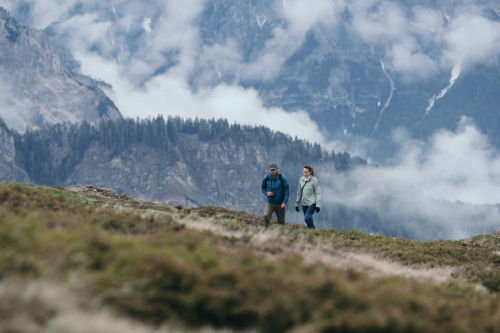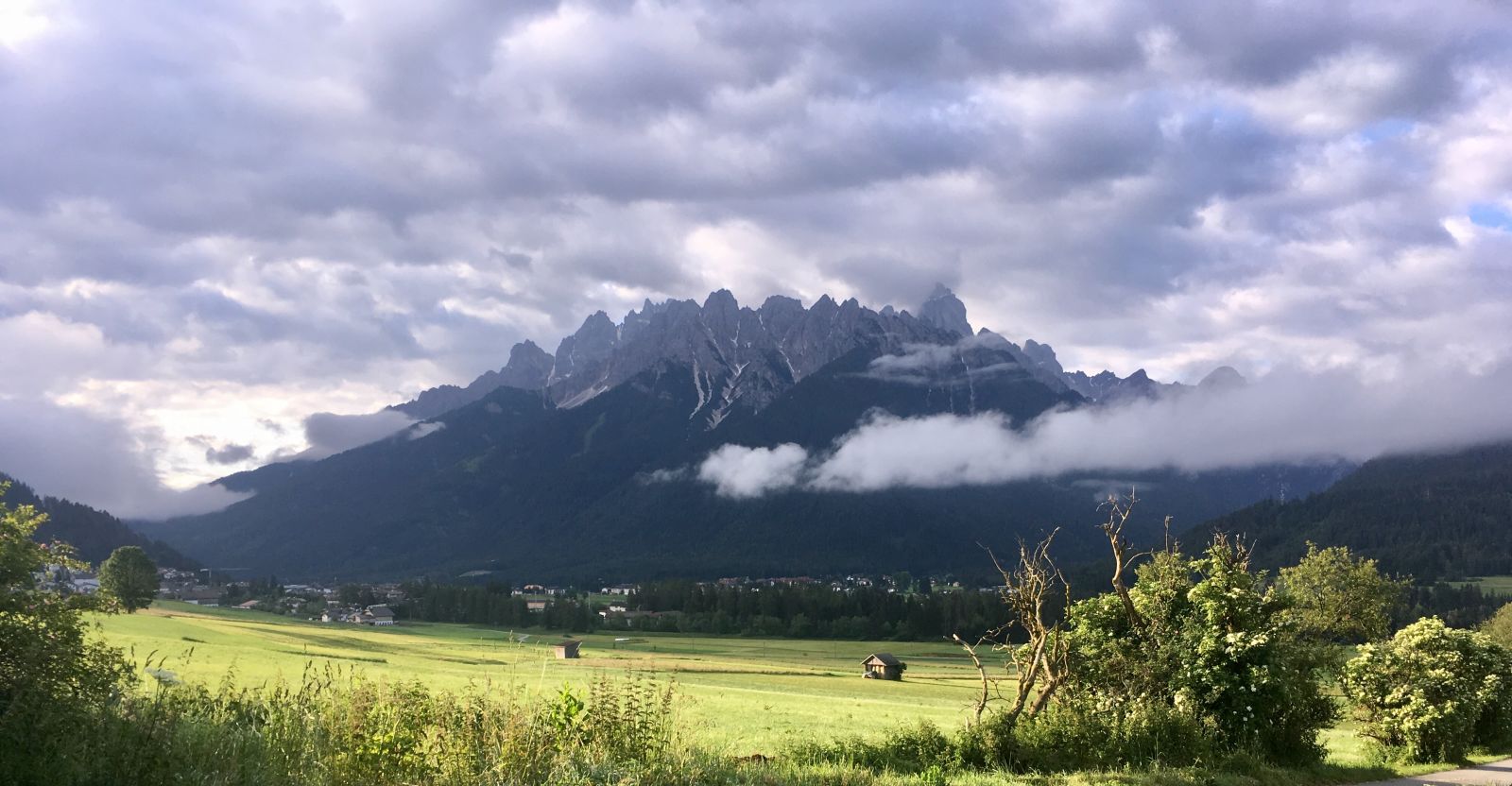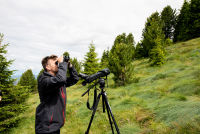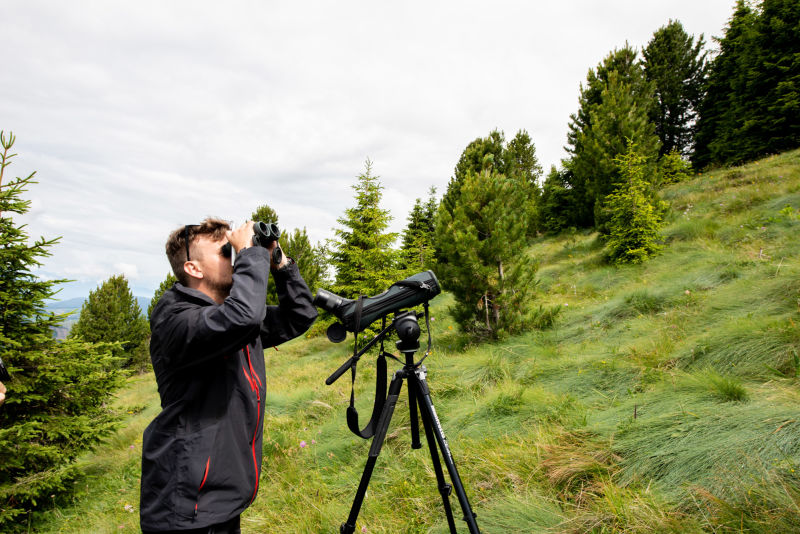What is the status quo of the habitats and diversity of species in South Tyrol, Italy? How do climate change and changes in land use affect biodiversity? Biodiversity Monitoring South Tyrol addresses these questions. The first results already give important insights.
The first survey points were examined in spring and summer 2019 and 2020. In autumn 2020, two survey seasons have thus been completed. The surveyed points will be surveyed again after every five years. So far, the status quo of the different habitats surveyed can be described. The research studies:
crop fields and permanent crops (vineyards, apple orchards),
forests,
settlement areas,
wetlands,
alpine habitats, and
meadows and pastures,
These are the most representative habitats for South Tyrol.
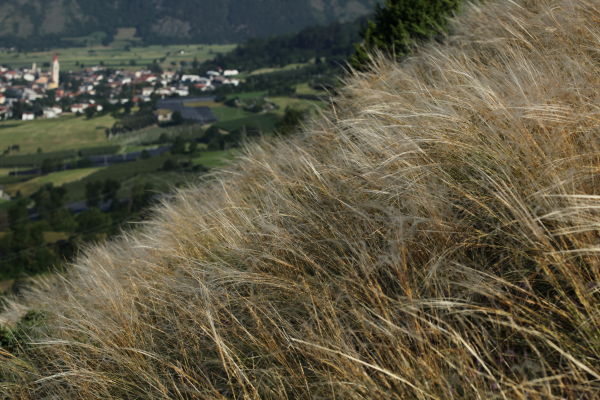
Agriculture
Apple orchards, vineyards and crop fields
About 10 different bird species were recorded in the permanent crops, mainly common and widespread species such as carrion crows, which are easily observed in these habitats. In addition, however, there are also hooded crows (Corvus cornix) present, here in the extreme north of their national range. Especially in vineyards, forest species such as wood pigeon (Columba palumbus) or spotted woodpecker (Dendrocopos major) were often found, as these habitats are closely interwoven with the surrounding forests. In an area dominated by fields with annual crops, species that are very important due to their conservation status were observed. For example, the eurasian skylark (Alauda arvensis), an endangered species, or the red kite (Milvus milvus), a species that has only been nesting in the province for a few years. Despite these exceptions, apple orchards, vineyards, and crop fields cannot be considered optimal habitats for birds.
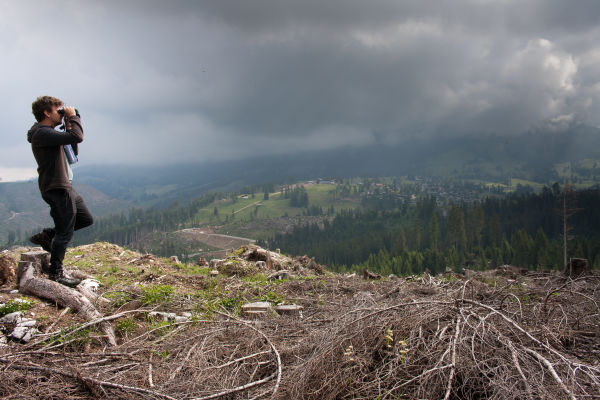
Into the woods
Forests
Forests have a rich bird community with an average of 10 bird species recorded at sites with this habitat type. Some of the bird species recorded in forests are particularly linked to this habitat, such as the western Bonelli's warbler (Phylloscopus), the tree pipit (Anthus trivialis) or the black woodpecker (Dryocopus martius), for which immediate protection measures are required under the Birds Directive. In general, forests are the habitat for many highly specialized species.

Wildlife at your doorstep
Settlements
Settlement areas are anything but poor in terms of species present. Anderle was able to identify a total of 7-11 different bird species per observation point, including the Italian sparrow (Passer italiae) and the European serin (Serinus serinus). Settlements are also great places for newly arrived animal and plant species, such as the Rose-ringed parakeet (Psittacula krameri), which can be sighted in Bolzano-Bozen
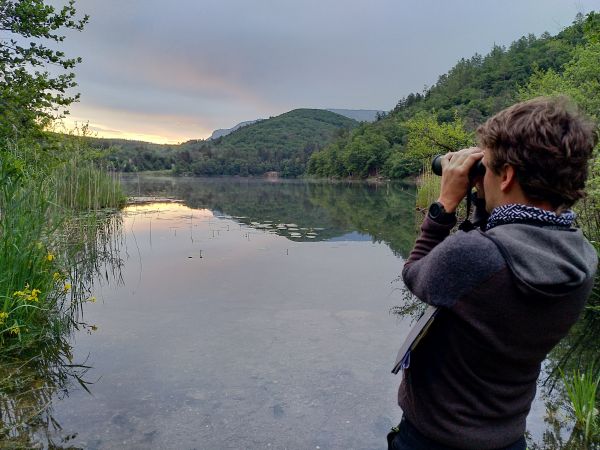
Marshes and
Wetlands
Wetland habitats have proven to be true hotspots of biodiversity. They are the habitat with the largest number of bird species. Among them are very rare species, such as the marsh warbler (Acrocephalus palustris) or the little bittern (Ixobrychus minutus). Of all the habitat types studied, the wetland habitats have the highest number of species on the country's Red List, i.e. in danger of disappearing permanently from South Tyrol
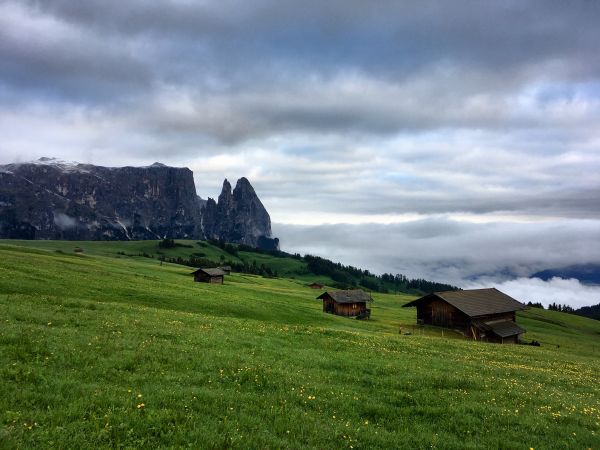
Up in the mountains
Alpine habitats
Alpine sites are among the most interesting study areas within the monitoring. For all animal and plant groups studied, the specialists predominate here, i.e. species that occur almost exclusively in this habitat and are adapted to the specific ecological conditions. Among birds, these are: the white-winged snowfinch (Montifringilla nivalis), the rock ptarmigan (Lagopus muta), the alpine accentor (Prunella collaris), the golden eagle (Aquila chrysaetos), the wheatear and the bearded vulture (Gypaetus barbatus), which has been reintroduced to the Alps thanks to a special project.

Grassland
Meadows and pastures
Meagre meadows are among the most species-rich habitats in South Tyrol. The extensive meadows and pastures are particularly important habitats for numerous rare bird species. The extremely rare corncrake (Crex crex), which builds its nest directly on the ground, was observed in a meadow below the Catinaccio-Rosengarten, the emblematic mountain of the Dolomites. In addition, the barred warbler (Curruca nisoria), whose population is very much threatened with extinction in South Tyrol, was found in a dry meadow in the western part of the province.
However, agriculture has undergone enormous changes in recent decades. In order to produce more fodder for livestock, mowing has been done earlier and the frequency of cutting has been maximized; in addition, grassland has been fertilized much more intensively than in the past. This more intensive use of grassland has serious consequences for biodiversity, especially for the lives of birds that depend on these habitats.
The investigations revealed a detailed picture of the species found in South Tyrolean meadows. The main trends that were already known have been confirmed: Species such as whinchat (Saxicola rubetra) and corncrake (Crex crex) have become rare, while others, especially barred warbler (Curruca nisoria) or ortolan (Emberiza hortulana), have practically disappeared. Nightjars (Caprimulgus europaeus) and quails (Coturnix coturnix) are also rarely found. Red-backed shrike (Lanius collurio), skylark (Alauda arvensis), and yellowhammer (Emberiza citrinella), on the other hand, are still present, but in many cases only sporadically or with locally limited populations.
All these birds depend on extensively managed habitats and their characteristic linear and punctuated elements such as shrubs, hedges, or rows of trees. For this reason, undeveloped areas are also of vital importance. Although such landscapes still exist in some places, they are in danger of disappearing completely due to the continuous intensification of agricultural activities or the abandonment of cultivation, so that they give way to forest and the associated disappearance of grassland habitat. The few remaining habitats that are still traditionally managed by some farmers are therefore of enormous importance for the protection of nature and especially the species that are so specifically tied to these unique conditions.

About
EURAC Research
EURAC research addresses the greatest challenges facing us in the future: people need: health, energy, well-functioning political and social systems and an intact environment. These are complex questions. The association is seeking the answers in the interaction between many different disciplines. In so doing, their research work embraces three major themes:
regions fit for living in,
diversity as a life-enhancing feature,
a healthy society.
All pictures ©EuracResearch

